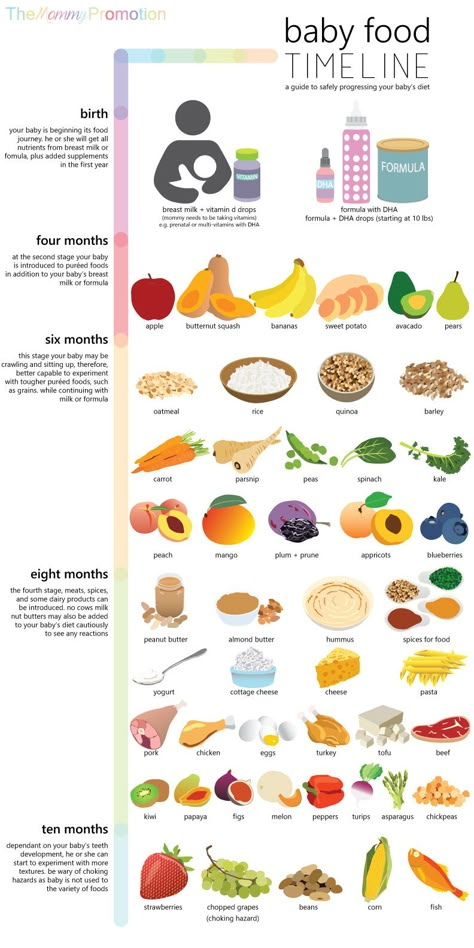When to introduce meat baby food
How to Serve Meat to Baby (6+ Months)
Meat is a great first food for babies and it can be made into a baby food puree, mashed into a chunky puree, served on the bone, shredded, or served in strips as a finger food or for baby-led weaning. These 6 meat baby food ideas are simple, healthy, and quick to make using beef, chicken, turkey, lamb and pork. This guide is perfect for babies 6 months and up!
Medically reviewed and co-written by Jamie Johnson, Registered Dietitian Nutritionist (RDN), and Lauren Braaten, Pediatric Occupational Therapist (OT).
Meat Baby FoodServing your baby meat from the start might seem like an unconventional first choice, but meat is an extremely nutrient-dense food for babies 6 months and up.
This guide will give you 6 easy ways to incorporate meat 🍗 into your baby’s diet – served as a baby food puree, mashed with veggies, served on the bone, made into meatballs, served in strips, shredded or ground. You can serve meat to baby doing purees or baby-led weaning. These recipes are great for babies 6 months – 2 years of age!
First time making homemade baby food? Then, I would suggest that you start by reading my very in-depth Guide on how to Make Homemade Baby Food – which goes over all the important information such as the best cooking tools to have on hand, safe storage, how to know when baby is ready for solids, how to introduce purees, the best first foods for baby, and more! If you are doing Baby-Led Weaning, then be sure to check out my Complete Guide to Baby-Led Weaning – which covers what exactly is baby-led weaning, to every parent’s concern of baby-led weaning and choking, this guide goes over it all. I will also share how to know when baby is ready for BLW, the top 10 best first foods, a helpful sample blw feeding schedule, helpful tools to have on hand, and much much more!
Want more information? Then make sure to check out my best-selling cookbook for even more information and recipes!
Meat for Baby Video
Watch this video to find out how to feed meat to your baby!
Reasons to Love These Meat Recipes for Baby- can be served as a baby food puree
- also great for baby-led weaning or the finger food stage
- nutrient-dense
- easy to have one meal for the entire family
- excellent sources of protein, zinc, vitamin B12, selenium and niacin
- good sources of iron, vitamin B6, and phosphorous
- puree and ground meat are freezer-friendly
Different meats will have different nutrient profiles, but in general, meat is an excellent source of protein, which is essential for proper growth and development of all organ systems and for maintaining and repairing tissues. It is considered a complete protein, meaning it has all of the amino acids that are needed to make protein.
It is considered a complete protein, meaning it has all of the amino acids that are needed to make protein.
Meat tends to be a good source of iron, needed for making red blood cells and for neurodevelopment, and zinc, needed for growth and development and supporting the immune system. Animal sources, including meat, are high in B12, which is essential for brain development and healthy red blood cells.
Best Meat to Serve BabyThere are a variety of meats your baby can eat right from the start! And with so many options on how to serve them, your baby will never get bored. Try serving your baby a new meat dish every week for maximum exposure.
- Beef: served on the bone (ribs), made into meatballs, ground, in strips, shredded or pureed
- Chicken: served on the bone (drumsticks), made into meatballs, ground, in strips, shredded or pureed
- Turkey: served on the bone (drumsticks), made into meatballs, ground, in strips, shredded or pureed
- Lamb: served on the bone (lamb chops), made into meatballs or ground
- Pork: served in strips, shredded, made into meatballs, ground or pureed
You will want to stay away from any processed meats such as bacon, hot dogs, store-bought sausage, ham, deli meat, etc, ideally as long as possible, but at least until 1 year of age, since processed meats tend to be full of preservatives and have been linked to cancer.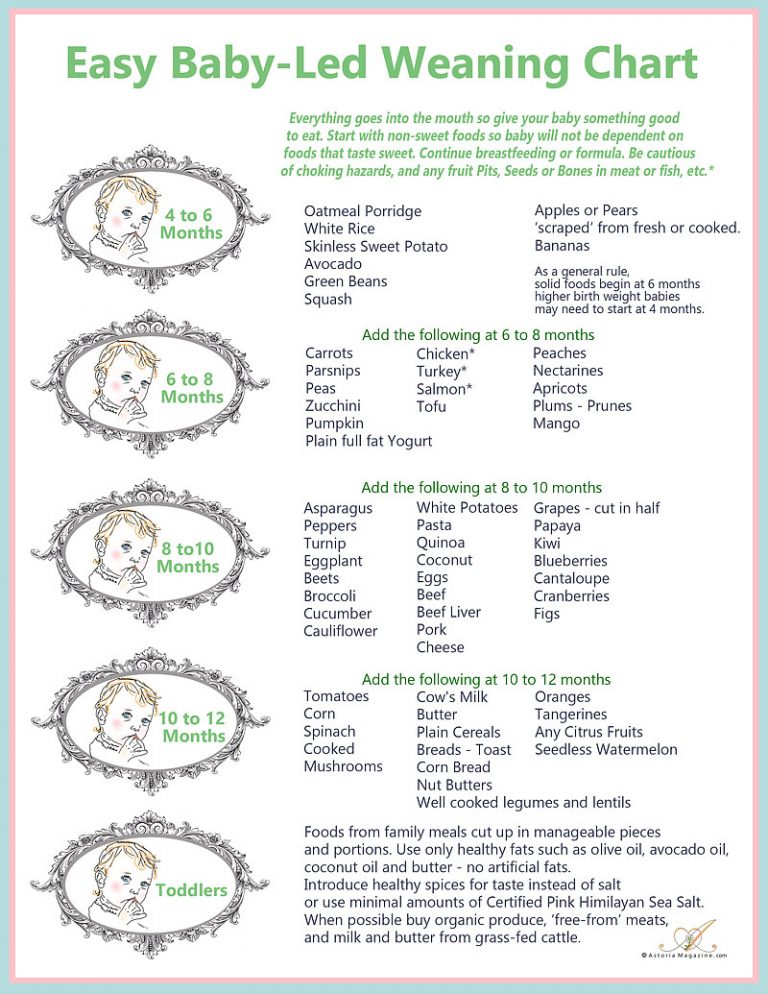 You will also want to season the meat at home with homemade spices or spice blends and avoid any store-bought marinades, rubs, or sauces as they tend to be too high in sodium and sugar. Make sure all meat is fully cooked to prevent any food-borne illnesses that can be caused by undercooked meat. That means no rare or medium-rare steak for your baby.
You will also want to season the meat at home with homemade spices or spice blends and avoid any store-bought marinades, rubs, or sauces as they tend to be too high in sodium and sugar. Make sure all meat is fully cooked to prevent any food-borne illnesses that can be caused by undercooked meat. That means no rare or medium-rare steak for your baby.
Meat Sources: you certainly can buy organic, pasture-raised, and grass-fed meat, which is lower in saturated fat and higher in Omega 3’s and antioxidants than conventional, if you prefer and your budget allows. But conventional meats are also completely safe and healthy for babies.
Frequently Asked Questions
When can you introduce meat to baby?
Whether you start baby on purees or are doing baby-led weaning, meat is an amazing first food for baby! When a baby can start on solids is determined by their own rate of development, which generally comes between 4-6 months of age for purees and at or after 6 months for baby-led weaning.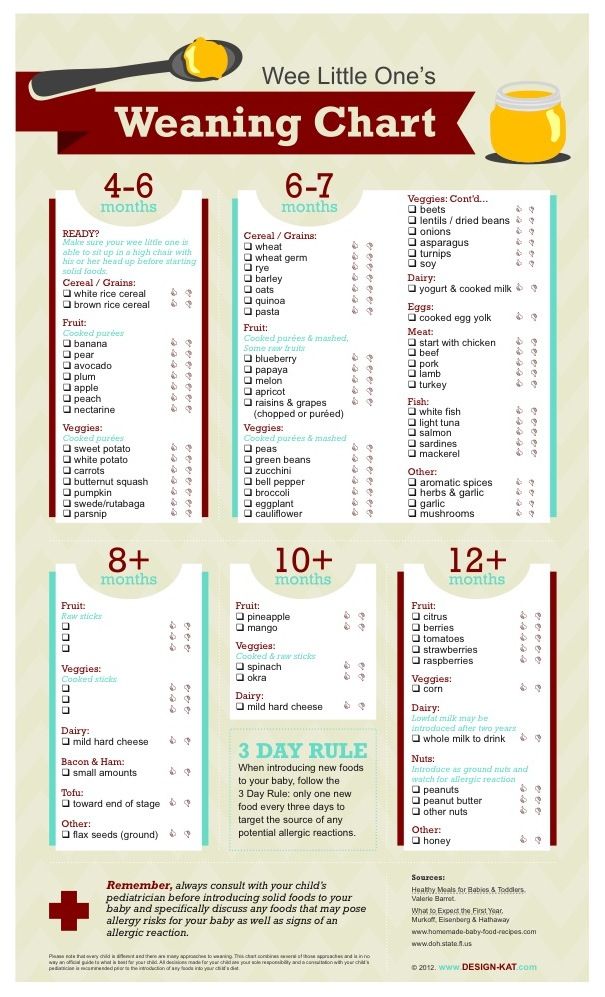 Some of the developmental milestones your baby needs to reach in order to start solids include: if your baby has solid control of their head and neck, if your baby has doubled their birth weight, and if your baby is reaching for or opening their mouth when you eat (see my guide here). Before you start baby on purees, you should consult with your pediatrician to make sure your child is developmentally ready.
Some of the developmental milestones your baby needs to reach in order to start solids include: if your baby has solid control of their head and neck, if your baby has doubled their birth weight, and if your baby is reaching for or opening their mouth when you eat (see my guide here). Before you start baby on purees, you should consult with your pediatrician to make sure your child is developmentally ready.
Is meat a choking hazard for babies?
Yes, meat is one of the more common choking hazards for babies. You want to make sure the meat you are serving to your baby is soft, tender, and appropriately sized for your baby’s age. When in doubt, go for a bigger 2-3′ strip (2 adult finger size) of meat for your baby, or a puree. For safe ways to prepare meat for your baby, see my recommended recipes below. And always be near baby or toddler when they are eating meat of any kind.
How do babies chew meat without teeth?
The question of how babies can chew foods without teeth, especially meat, makes all of us scratch our heads! But in reality, we all chew food with our back molars, not our front teeth, which baby doesn’t get until 18-22 months of age.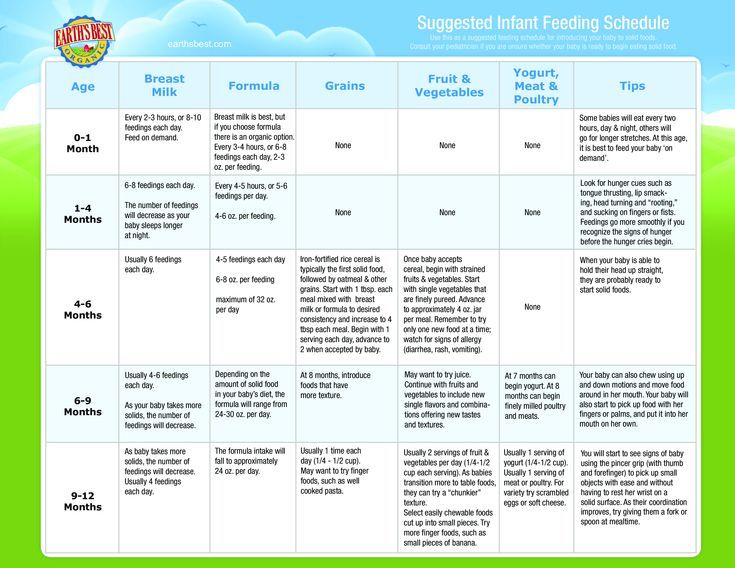 Good thing babies have super tough and strong gums, which they use to mash, gnaw and chew foods. Baby’s gums are better at chewing food than you would think, and your baby will be able to chew more foods the older they get, even without their molars.
Good thing babies have super tough and strong gums, which they use to mash, gnaw and chew foods. Baby’s gums are better at chewing food than you would think, and your baby will be able to chew more foods the older they get, even without their molars.
Is meat a common allergen for baby?
No, meat is not a common allergen, however, as with any food, start with a small portion and be aware of any signs that might be an allergic reaction after introducing it
Does chicken cause constipation for babies?
No, meat is not known to cause constipation in babies, however it won’t really help with constipation either since it lacks fiber.
How to Cut Meat for BabyA good rule of thumb to follow is the younger the baby, the bigger the piece of meat. I know it sounds counterintuitive, but the bigger the piece of meat, allows baby to hold onto it while chewing and sucking on it without posing as high of a choking hazard.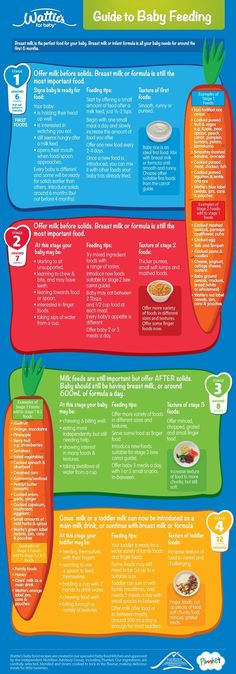 For babies 6-9 months, you will want to cut the meat into 2-3′ strips that are roughly the size of 2 adult fingers. You can slice the meat thinner for babies 9-12 months or shred it into small pieces.
For babies 6-9 months, you will want to cut the meat into 2-3′ strips that are roughly the size of 2 adult fingers. You can slice the meat thinner for babies 9-12 months or shred it into small pieces.
- For Meat Puree: you can store meat puree in the fridge for up to 4 days or freeze individual portions in a freezer tray for up to 2 months. To defrost, gently heat on the stove or in the microwave until warm.
- For Ground Meat: you can store cooked ground meat in the fridge for up to 4 days or freeze individual portions in a freezer tray for up to 2 months. To defrost, gently heat on the stove or in the microwave until warm.
- Meatballs: you can store cooked meatballs in the fridge for up to 4 days or freeze them for up to 2 months. To defrost, gently heat on the stove or in the microwave until warm.
- Meat on the Bone, Strips, and Shredded: can be stored in the fridge for up to 4 days.

Feeding Tips
- Watch for signs that your baby is ready to start solid foods, usually around 6 months of age. Look for sitting with minimal assistance, good control of their head and trunk, bringing hands and toys to their mouth, and appearing interested in what you are eating.
- Throwing spoons is a common phase that all babies go through at one point or another. One of the best ways to handle spoon throwing is to ignore it and keep feeding baby as usual (with an extra spoon you already have at the table). If baby ends up also throwing back up spoons #2 AND #3, simply encourage your baby to eat with their hands until they appear to be finished with the meal.
- Have a spare spoon (or three!) – even very young babies often want to be involved in feeding themselves as much as possible. Giving baby an extra spoon to hold can be helpful in giving her a sense of control and also promotes hand-eye coordination. Allow baby to use spoons as a teether during the meal.
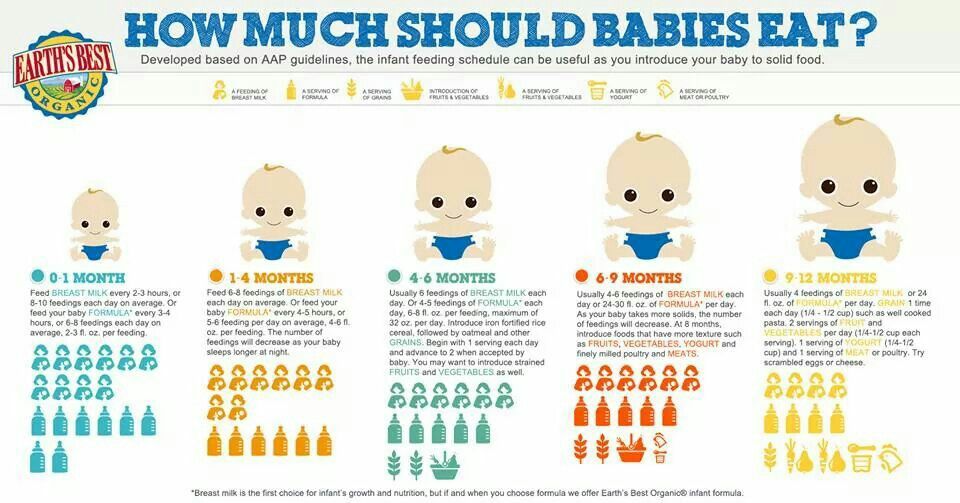 There are many great options out there but a few we particularly love include the Olababy 3 Piece Set, the NumNum Pre-Spoon GOOtensils, and the ChooMee FlexiDip Baby Starter Spoons.
There are many great options out there but a few we particularly love include the Olababy 3 Piece Set, the NumNum Pre-Spoon GOOtensils, and the ChooMee FlexiDip Baby Starter Spoons.
Helpful Tools
These tools will make doing feeding baby so much easier. For more of my favorite kitchen tools make sure to check out my shop.
- steamer basket
- medium saucepan
- storage containers for fridge
- highchair
- suction bowl or baby bowl
- baby spoon
- open lid cup
- bib with catch pocket
Serving a meat puree to your baby is a great way to expose your baby to the taste and nutritional benefits meat has to offer. While you can serve baby just the meat puree, it does have a very intense flavor that some babies may not care for. If this is the case, I would recommend you add a spoonful of chicken, beef, or turkey puree into another fruit or veggie puree your baby likes. Some great combinations are beef with sweet potato puree, chicken and mango puree, or chicken and broccoli puree. Since meat is not a common allergen, you can serve a meat combination puree as soon as your baby has tried the other fruit or vegetable. You can also serve baby a chunky mashed meat and veggie puree (recipe below) for a simple stage two puree.
Since meat is not a common allergen, you can serve a meat combination puree as soon as your baby has tried the other fruit or vegetable. You can also serve baby a chunky mashed meat and veggie puree (recipe below) for a simple stage two puree.
It’s very easy to serve meat to babies for baby-led weaning starting at 6 months or as a finger foods starting at 9 months. You will want to start by serving baby the bigger pieces of meats (ribs or drumsticks, 2-3 inch adult finger size strips, or longer meatballs) and work your way down to the smaller pieces as your baby develops their pincer grasp, usually around 9 months of age.
Palmar vs. Pincer GraspPalmar grasp and pincer grasp can be confusing, so let’s go over the basics.
Palmar GraspThe palmar grasp is when your baby takes an entire 2-3′ piece of food and places most of the food into the palm of their hand with their fingers curling around the food. This leaves a small portion to stick out of the top of their hand, which is what they will chew on. The palmar grasp usually develops around 6 months of age, making it the first way your baby will move food from their plate to their mouths.
This leaves a small portion to stick out of the top of their hand, which is what they will chew on. The palmar grasp usually develops around 6 months of age, making it the first way your baby will move food from their plate to their mouths.
A pincer grasp is when a baby uses their index finger and thumb to pick up smaller pieces of food. A baby will typically develop a pincer grasp around 9 months of age but can vary as all children develop at different rates.
HOW TO SERVE MEAT TO BABYThere are several different ways to prepare meat for baby. Here are 6 of my favorite ways:
- Meat Puree (4-6+ Months)
- Mashed Meat with Veggies (6+ Months)
- Meat on Bone (6+ Months)
- Meatball or Patty (6-7+ Months)
- Ground (8-9+ Months)
- Shredded or 2-3 inch Strips of Meat (Strips – 6+ Months, Shredded – 9+ Months)
You can serve baby pureed chicken, beef, or turkey puree.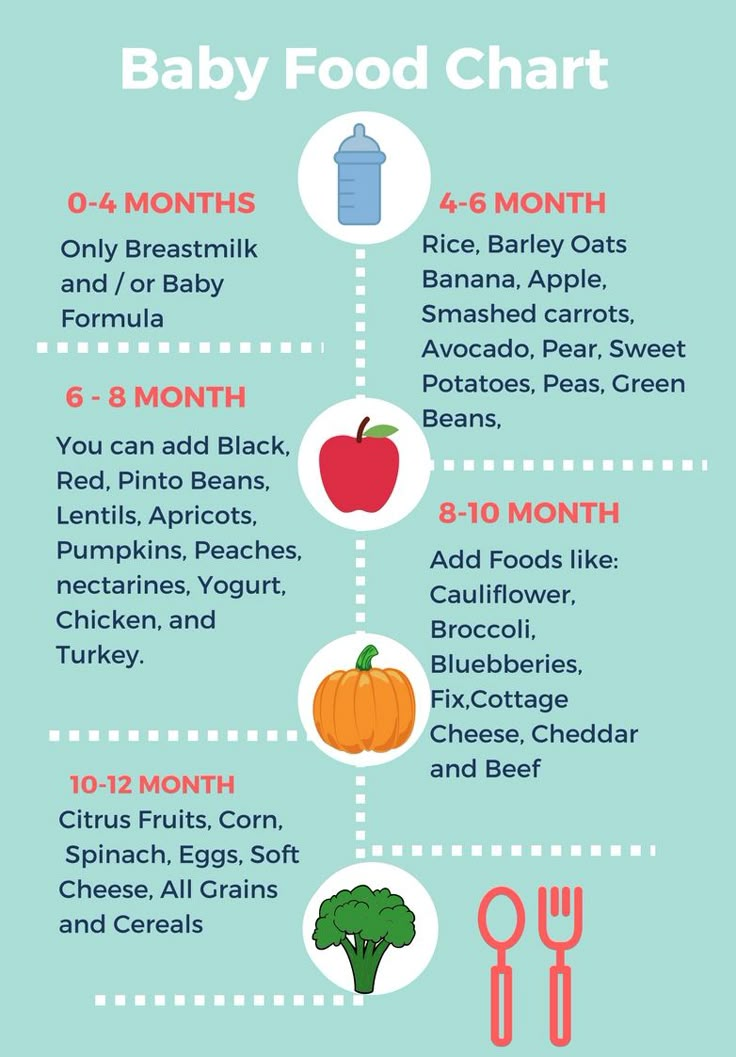 The key to making delicious pureed meat is to keep the meat tender during the cooking process. I like to simmer the meat in a low or no-sodium broth until just cooked before letting it cool and then blending until smooth. You can add veggies such as onions, carrots, celery, and red peppers to the broth for extra flavor. Once made, the meat puree will last 4 days in the fridge or 2 months in the freezer.
The key to making delicious pureed meat is to keep the meat tender during the cooking process. I like to simmer the meat in a low or no-sodium broth until just cooked before letting it cool and then blending until smooth. You can add veggies such as onions, carrots, celery, and red peppers to the broth for extra flavor. Once made, the meat puree will last 4 days in the fridge or 2 months in the freezer.
Meat to Use: you can use chicken, beef, turkey or lamb to make a baby puree.
Meat on the BoneWhile serving meat on the bone to your baby may seem a little intense, it’s actually the perfect food for small hands to grasp and be able to self-feed as the bones make for the perfect handle. Make sure to remove any skin, fat, or small bones before serving.
Meat to Use: You can serve baby chicken or turkey drumsticks, ribs, or lamb chops.
Meatballs for BabyYou can serve meatballs for babies starting around 6-7 months of age. I love to make homemade meatballs for baby so that I can form them into long finger shapes, which are easier for babies to grasp and eat. You can also slice the longer meatballs into strips or chop them into smaller ‘pea’ size pieces. If using store-bought meatballs, look for a brand that doesn’t have a ton of added ingredients and has lower sodium. If serving a round meatball to your baby, you can cut it into quartered strips or small pieces.
I love to make homemade meatballs for baby so that I can form them into long finger shapes, which are easier for babies to grasp and eat. You can also slice the longer meatballs into strips or chop them into smaller ‘pea’ size pieces. If using store-bought meatballs, look for a brand that doesn’t have a ton of added ingredients and has lower sodium. If serving a round meatball to your baby, you can cut it into quartered strips or small pieces.
Meat to Use: you can use beef, chicken, turkey or lamb to make meatballs for baby.
Ground Meat for BabyServing cooked ground meat is a great way for your baby to eat meat, as it is soft and tender than other cuts of meat, which makes it easier for your baby to chew and swallow. I also love that you can add in seasonings such as dried oregano, basil, paprika, garlic powder, mild chili powder, etc, to your meat while cooking to give it an exciting seasoned taste. You can serve ground meat to babies 9 months and up that are working on their pincer grasp or load some of the cooked ground meat onto a baby fork or self-feeding spoon to feed them or hand the utensil over to your baby to feed themselves.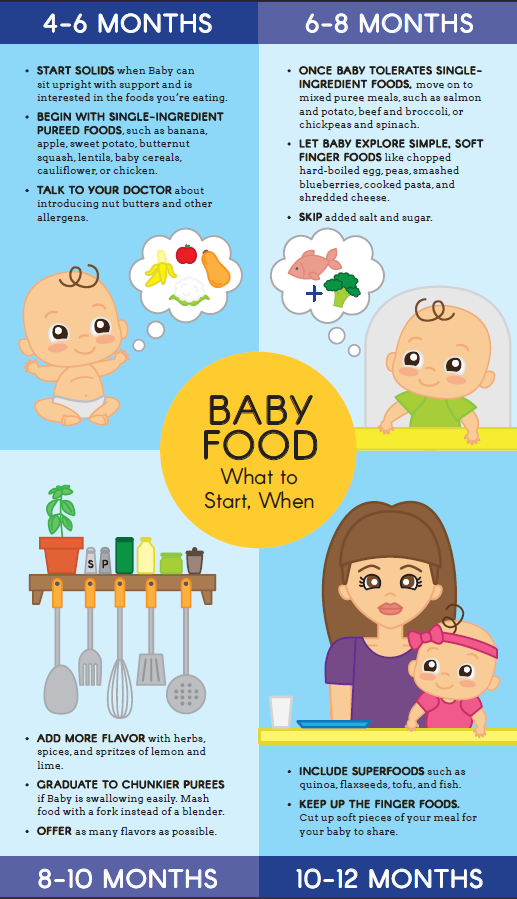
Meat to Use: Feel free to use ground turkey, chicken, beef or lamb.
Pulled or Strips of MeatThe first food my daughter ever had was a huge piece of steak she grabbed off of my husband’s plate! Pulled (shredded) or strips of chicken, beef, pork, lamb, or turkey are one of the easiest ways to serve meat to babies. Take a 2-3′ strip, which is roughly the size of two adult fingers, of meat that you are going to have for dinner and serve it to your baby. You can also shred the meat into smaller pieces for slightly older babies (9+ months). Just make sure you remove any skin, fat, hard pieces, or small bones before serving.
Mashed Meat with VeggiesThis method works great for babies on Stage Two or Stage Three baby food purees or just starting on finger foods. To make this, you will mash a small piece of chicken, beef, or turkey along with a spoonful of cooked veggies such as carrots, sweet potatoes, or broccoli until they are combined yet still slightly chunky. Then you can feed baby this chunky puree, or you can load a self-feeding spoon and have them feed themselves.
Then you can feed baby this chunky puree, or you can load a self-feeding spoon and have them feed themselves.
- Soft and Tender: With whatever meat you are serving, make sure it is soft and tender to make it easier for your baby to chew. You don’t want to serve baby tough overcooked meat, skin, small bones, or pieces of fat as those are all choking hazards.
- Serve a Variety: make sure you serve your baby various meats in a few different variations to diversify their textures and tastes, which helps with picky eating. Don’t be afraid to step out of your comfort zone and offer baby chicken liver, veal, mutton, goat, buffalo, or organ meats such as heart, kidney, and liver.
- Choose Dark Meat: offer baby dark turkey or chicken meat whenever possible as it has almost double the amount of iron in it.
- Serve Fully Cooked Meat: Ensure you are serving your baby fully cooked meat as “rare” and “medium rare” are a no for baby.

- 1/2 pound ground chicken or turkey
- 1/4 cup breadcrumbs
- 1 large egg
- 1 tsp dried oregano or basil
- 1/2 tsp garlic powder
Prep: If baking, preheat the oven to 400° F. Line the baking sheet with parchment paper or a silicone mat and coat with a little cooking spray.
Mix: In a medium mixing bowl, add all of the ingredients. Mix together with your hands or a spatula until just incorporated.
Form: Roll the mixture into 3" long rolls – roughly 10 in total. Place on the baking sheet.
Bake: Place the baking sheet in the oven and bake for 20 minutes or until done all the way through.
 Let cool and serve to baby.
Let cool and serve to baby.
Age: 6-7+ months
Yield: 10 longer meatballs
Storage: will store in the fridge for up to 4 days or in the freezer for 2 months. To reheat, gently heat the meatballs in the microwave or in a skillet on the stove top until just warm.
Nordic Ware Baking Sheet
Stackable Glass Bowl Set
EZPZ
Did you make this recipe?
Tag @babyfoode on Instagram and hashtag it #babyfoode!
Pin Recipe Email a Friend
When babies can have chicken and other kinds of meat
Your baby can eat meat that has been pureed to a very thin, smooth consistency as soon as they start eating solid food, usually around 6 months old. It doesn't matter whether you introduce beef, poultry, or another type of meat first.
It doesn't matter whether you introduce beef, poultry, or another type of meat first.
Some babies don't like meat as much as fruits and vegetables, which tend to be sweet. If that's the case, try mixing your baby's favorite fruit or vegetable into pureed, slightly warmed meat to help them adapt to the new flavor.
If your baby won't eat meat at first, you can wait a few weeks and then try again. Babies don't have to eat meat, but it's full of important nutrients and is a great first food.
Is meat healthy for babies?
Meat contains easily absorbed sources of iron and zinc that your baby needs as they grow. Breast milk doesn't have much iron in it, so while most babies have enough iron stored in their bodies for the first few months of life, they need another source by the time they're around 6 months old. That's why the American Academy of Pediatrics recommends that your baby's first foods include either meat or iron-fortified cereals. (If your baby is fed with an iron-fortified formula, they don't need iron from other sources.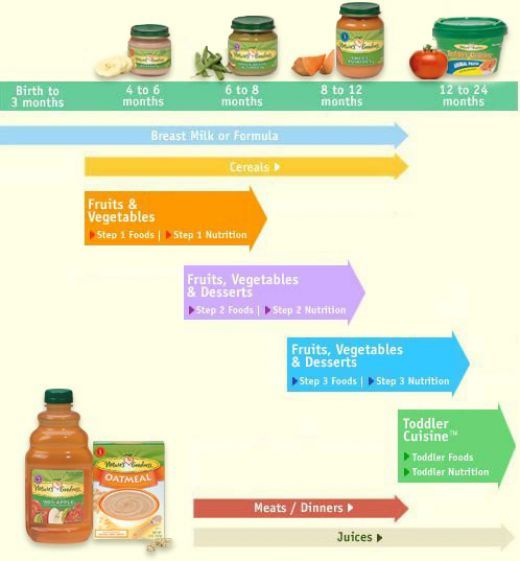 )
)
And, of course, meat is a great source of protein. Experts recommend that babies 7 to 12 months old get 11 grams of protein per day, which they primarily get from breast milk or formula. It's very rare for babies in the United States to be protein deficient, so don't worry too much about getting tons of protein into your baby's diet.
Avoid giving your baby processed meats, like sausage, hot dogs, bologna, and Spam, until they're at least 1 year old – and even then, serve these foods sparingly, since they tend to be high in sodium and nitrates.
Can babies be allergic to meat?
Meat allergies aren't common, but they can happen. When trying a new food, experts recommend giving it to your baby at home, rather than at daycare or a restaurant. Serve it for three to five days before offering another new food; that way you can monitor your baby for a reaction and know what's likely causing it. That goes for different types of meat, too – start with one kind (say, ground chicken) and wait a few days before introducing another (like beef or pork).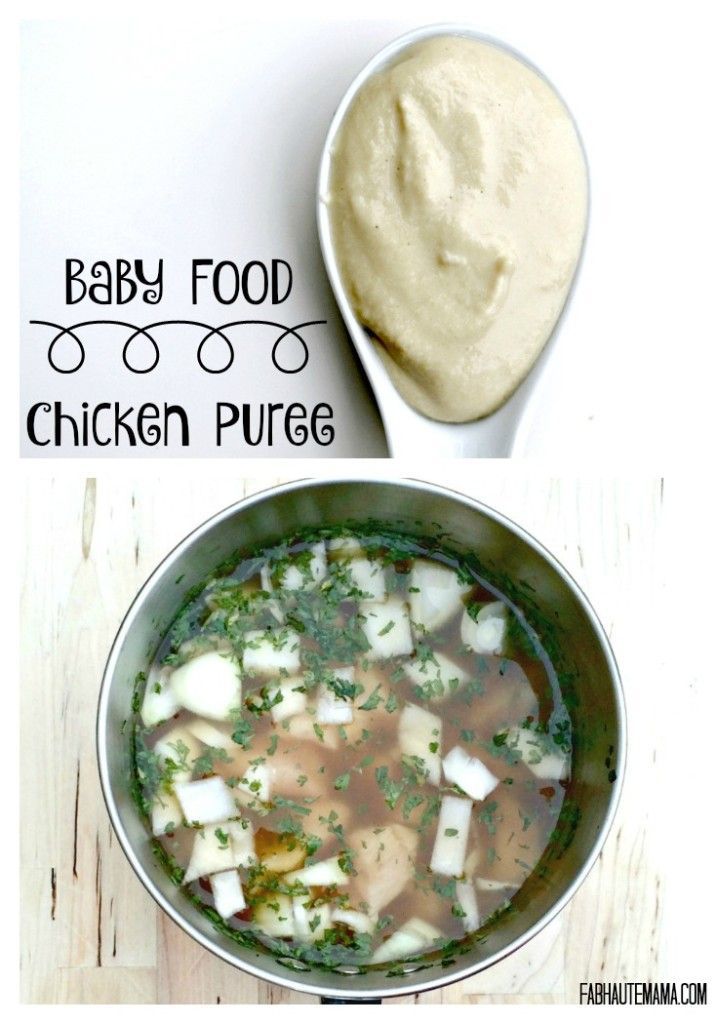
Food allergy symptoms range from mild to severe; sometimes they show up immediately, but it could also take hours for symptoms to develop. Milder symptoms that don't require immediate medical attention include itchiness in the eyes, ears, throat, nose, or mouth; coughing; nausea and vomiting; diarrhea; and swelling around the tongue and lips.
Call 911 if any of these mild symptoms become more severe; if your baby is having trouble breathing; or if your baby is showing symptoms involving more than one part of the body.
How to serve meat to babies
To prevent choking, puree any meat you feed your baby into a smooth, thin consistency. You can add water or some cooked pureed fruit or vegetables to get it to the right texture.
Don't offer your baby pieces of meat until they've been eating other finger foods successfully and have several teeth (at around 8 to 10 months old) – and then start with well-cooked, finely chopped pieces.
Try these recipes with meat for your baby:
- Turkey or chicken puree
- Chicken curry with green beans and zucchini
- Shepherd's pie
How to introduce complementary foods: porridge, meat, cottage cheese
What foods and in what order to give the child to start complementary foods, where to start complementary foods.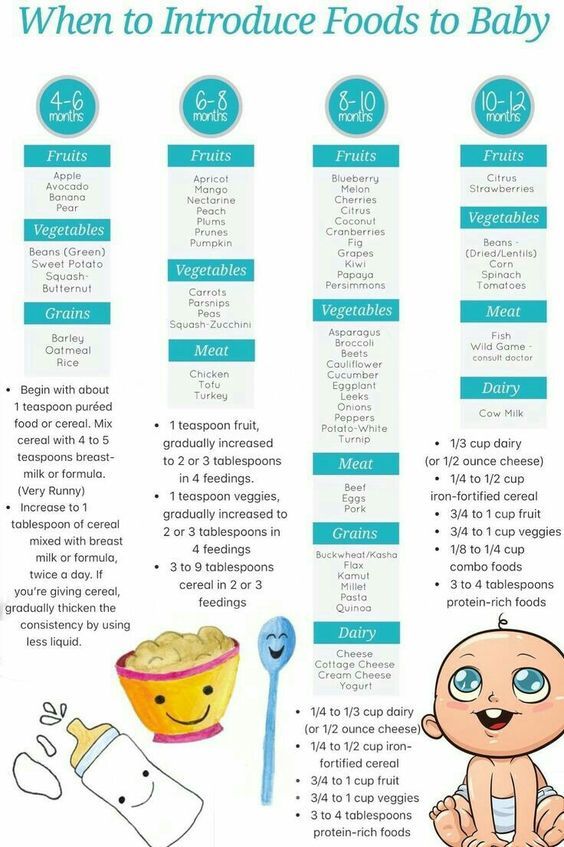
During the first year of life, the main source of all nutrients for the baby is breast milk or an adapted mixture. Complementary foods supplement the baby's diet with the necessary elements, and also introduce him to new "adult" food.
But often mothers, especially young and inexperienced ones, are concerned about what products and in what order to give the child so that this acquaintance goes off without a hitch. Let's figure it out together. Usually, as the first complementary foods, the baby receives vegetable puree or cereal. Where exactly to start depends on the child's health, the maturity of the nervous system and the functional state of the baby's digestive system. The exact timing and scheme for the introduction of complementary foods can only be established by a pediatrician. He will be guided by the individual characteristics and needs of the child.
Vegetable puree
Vegetables are a source of organic acids, iron, potassium and other minerals, dietary fiber, and vitamins.
Certain types of vegetables (carrots, pumpkin, spinach, etc.) are rich in carotene, a precursor of vitamin A.
Vegetable purees are the best option for the first feeding of a child. It is recommended to start with one-component mashed vegetables with delicate fiber (zucchini, cauliflower, pumpkin, broccoli), later other vegetables (white cabbage, carrots, potatoes, etc.) are introduced into the child's diet.
And only six to eight weeks after the "acquaintance" of the baby with the first vegetable, you can also introduce a combined vegetable complementary food, consisting of several components.
Feeding the baby with cereals
Porridges have a high energy value, so they are introduced as the first complementary foods for babies who are slowly gaining weight, and in other cases - secondarily after vegetables. Porridges are a source of carbohydrates, vegetable proteins, dietary fiber, some trace elements and the main source of B vitamins.
The baby's first cereals should be monocomponent, dairy-free and gluten-free (rice, buckwheat, later corn). You can use breast milk, infant formula or water to dilute the porridge. In the future, gluten-containing cereals (oatmeal, wheat, semolina), as well as cereals from mixtures of different cereals, are also introduced into the child's diet.
What fruits to start complementary foods with
Fruit puree can be introduced to a child in the first six months of life: for constipation, when the introduction of vegetable puree with vegetable oil did not have the desired effect, as well as for children with malnutrition and reduced appetite, adding to cereals to improve their taste. At the same time, fruit puree should not be the first product of complementary foods. Optimal is its appointment in the second half of the child's life, after the introduction of meat puree.
Juices, given their low nutritional value, it is advisable to give after the introduction of all the main types of complementary foods.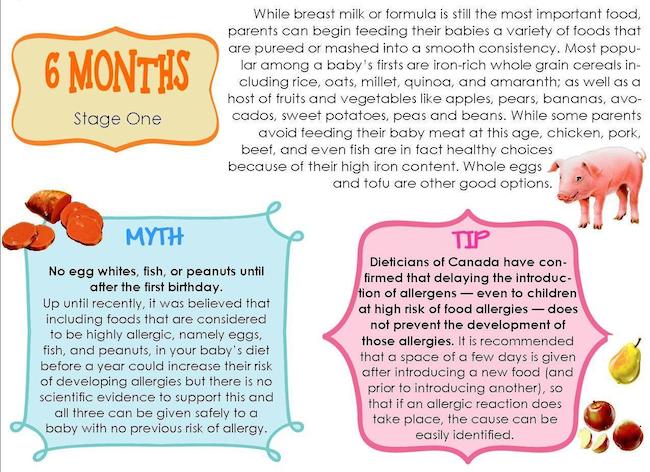 In addition, the use of juices, especially between meals, increases the risk of tooth decay. A large volume of juices (above the recommended norm) can serve as a risk factor for overweight in the future.
In addition, the use of juices, especially between meals, increases the risk of tooth decay. A large volume of juices (above the recommended norm) can serve as a risk factor for overweight in the future.
How to introduce meat into complementary foods
Meat is the main supplier of protein for a growing child's body. The amount of protein in beef, lean pork, rabbit meat, chickens, chickens, turkey reaches 20-21%. In addition, meat contains iron, magnesium, zinc and B vitamins.
Introduce meat puree into the baby's diet no earlier than six months, after vegetables, cereals. By composition, meat purees for baby food are divided into: "purely meat" and combined.
"Purely meat" purees contain at least 40% meat. It can be beef, pork, lamb, veal, horse meat, lamb meat, turkey, chicken and so on.
And in combined products, the plant base of vegetables (zucchini, potatoes, pumpkin, cauliflower, broccoli, etc.) or cereals (rice, oatmeal, buckwheat, semolina, etc. ) predominates.
) predominates.
The percentage of meat in them is less: 18-40% for meat-vegetable purees, and 5-18% for vegetable-meat ones.
Meat as complementary foods is introduced to the baby after six months in the form of monocomponent purees from low-fat varieties without the addition of salt and spices: chicken, turkey, rabbit meat. From eight to nine months, meat can already be given in the form of soufflé or meatballs. By the year your baby should receive 60-70 g of meat daily.
The meat is perfectly combined with other products, and it will not be difficult for you to prepare many tasty and healthy dishes for the crumbs. Surely he will like chicken with pumpkin, turkey with cauliflower or zucchini with beef.
Introduction of cottage cheese, fermented milk products into complementary foods
Unlike whole milk, fermented milk products are introduced into the diet of a baby up to a year. Choose from special baby foods tailored to your baby's needs, or make your own with a yoghurt maker and special bacteria.
Start with cottage cheese, because it is a valuable source of protein, fats and calcium. Cottage cheese can be offered to a child in the seventh or eighth month of life. First, give the baby half a teaspoon, and by twelve months, bring this volume to 50 g (but not more). It is better to choose cottage cheese with a low fat content (3-5%).
Sour-milk baby food products (baby kefir, bifikefir, yoghurts) can be introduced into the child's diet no earlier than reaching the age of eight months in an amount of no more than 200 ml per day.
Egg yolk
The yolk is also a source of protein and fat in the child's diet. But let the baby try the yolk with caution, because it can cause allergic reactions in children.
Enter it no earlier than seven months of age and first give ¼ of the yolk, by the year increasing the amount to ½. For convenience, you can add it to vegetable puree or porridge 2 times a week.
Fish
Fish is a source of easily digestible protein and fat. It contains a large amount of polyunsaturated fatty acids, including the ω-3 class, as well as vitamins B2, B12, and minerals. Fish is introduced with caution, taking into account individual tolerance, starting from 8 months in the form of fish puree, which should be given 2 times / week instead of a meat dish.
It contains a large amount of polyunsaturated fatty acids, including the ω-3 class, as well as vitamins B2, B12, and minerals. Fish is introduced with caution, taking into account individual tolerance, starting from 8 months in the form of fish puree, which should be given 2 times / week instead of a meat dish.
Industrial products
Pediatricians recommend the use of commercially prepared foods as complementary foods, as they have a number of advantages over home-cooked foods.
They are made from high quality raw materials, they meet strict hygienic requirements for safety indicators. Such products have a degree of grinding suitable for babies.
It is important that their chemical composition is always the same regardless of the season. In addition, modern industrial complementary foods are enriched with biologically active components, such as vitamins, minerals, prebiotics and probiotics, Omega-3 and Omega-6 fatty acids. Therefore, you can be sure that even in winter your baby will receive all the nutrients necessary for its growth and development.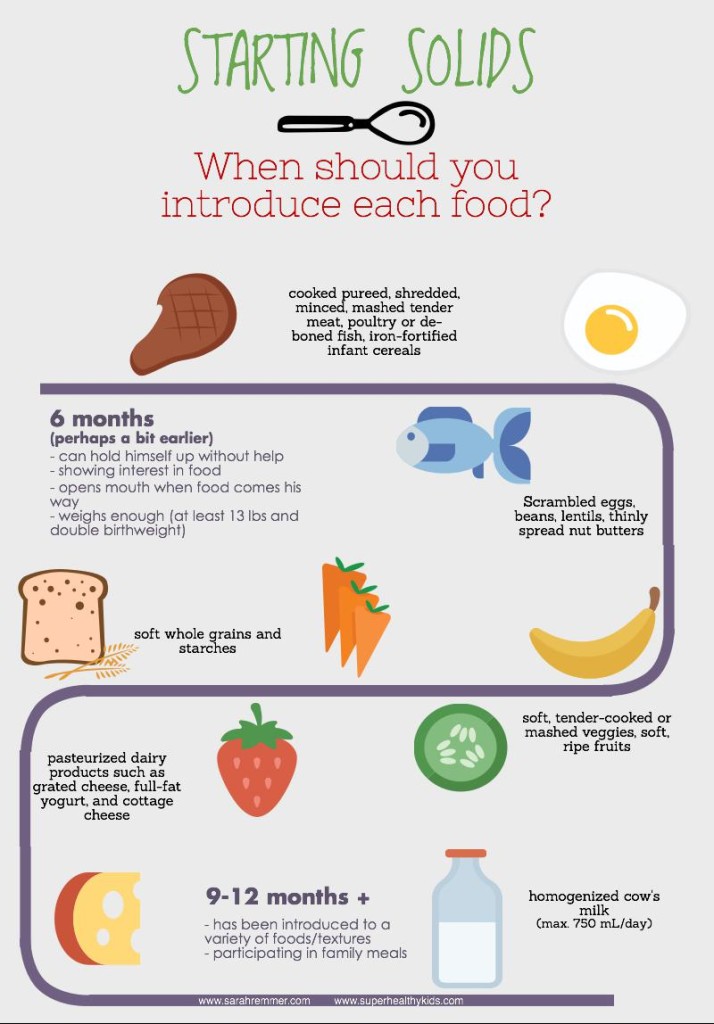
The material was prepared on the basis of the “Program for optimizing the feeding of children in the first year of life in the Russian Federation”, Moscow: Union of Pediatricians of Russia, 2019.
Complementary meat: why, when and how
Reviewer Kovtun Tatiana Anatolievna
46049 views
October 21, 2021
Login or register to save articles and products as favorites
As your baby grows, so does his need for vitamins, minerals and other important nutrients. When to introduce meat into complementary foods for a child so that he gets the maximum benefit?
Meat is a source of complete animal protein.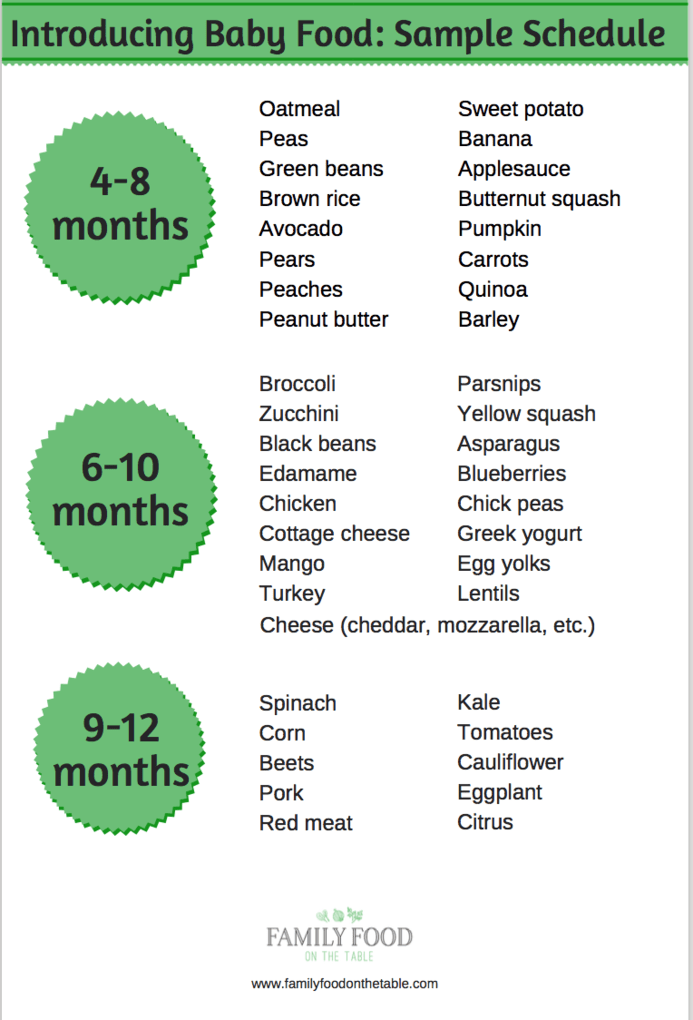 It contains essential amino acids, vitamins and minerals. Their deficiency in the nutrition of the child can lead to serious consequences, in particular to developmental delays and health problems.
It contains essential amino acids, vitamins and minerals. Their deficiency in the nutrition of the child can lead to serious consequences, in particular to developmental delays and health problems.
One of the valuable minerals in the composition of meat is iron, which is very important for development. Iron is part of the structure of the heme protein, which delivers oxygen to the cells and tissues of the body. In addition, the iron contained in meat is very well absorbed.
Meat purees are an essential part of a child's daily diet.
Why should you include meat purees in your child's daily diet?
- For growth. Meat contains a complete animal protein - a source of essential amino acids that are necessary for building your own cells and tissues.
- To deliver oxygen to tissues. Iron, which is found in meat, is necessary for the process of hematopoiesis and oxygen delivery to cells and tissues.
- For proper metabolism.
 Vitamins B2 and B6, as well as zinc, are essential for proper metabolism.
Vitamins B2 and B6, as well as zinc, are essential for proper metabolism.
So at what age can you give a child meat and how to do it?
When to introduce meat into complementary foods
This question is best answered by a pediatrician who has been observing the baby from birth, because the question of at what age it is possible to give meat to a child is decided individually, taking into account the characteristics of the child. The only general rule is that meat complementary foods should be introduced no earlier than 6 months. Up to a year, meat should be given to the child daily.
What kind of meat to start complementary foods with
It is best to start with monocomponent meat purees of industrial production - those that contain only one type of meat. So, if the baby has a negative reaction, it will immediately be clear what it is. To minimize the risks of allergies, it is better to choose low-allergenic meat purees.
FrutoNanny has a special line "First Choice"* where you can find hypoallergenic rabbit and turkey purees**.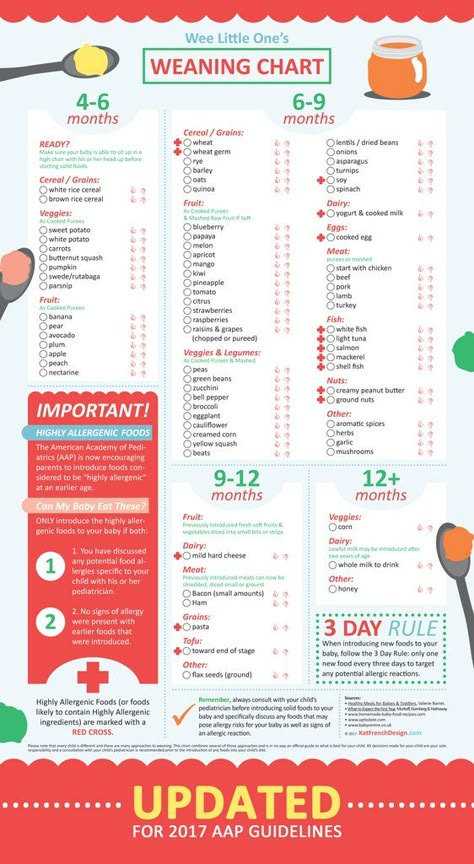 To begin with, it is worth treating the crumbs with 1/2 teaspoon of mashed potatoes in the morning and bring the amount to the age norm within 7-10 days.
To begin with, it is worth treating the crumbs with 1/2 teaspoon of mashed potatoes in the morning and bring the amount to the age norm within 7-10 days.
How to introduce meat - is it worth cooking it yourself or is it better to use ready-made purees?
It is difficult for moms and dads to determine the amount of nutrients and harmful substances in products for the baby without special devices. In addition, at home it is difficult to ensure complete microbiological safety, the required degree of grinding of the product.
The baby food industry handles these tasks very well. This is facilitated by verified technology:
- Products are tested to meet quality standards. Specialists make sure that dangerous microorganisms, nitrates, pesticides and heavy metals do not get into the jars.
- Foods are nutritionally balanced. The baby will receive the right amount of nutrients, regardless of the time of year.
- In production, it is possible to make puree with an ideal homogeneous texture.
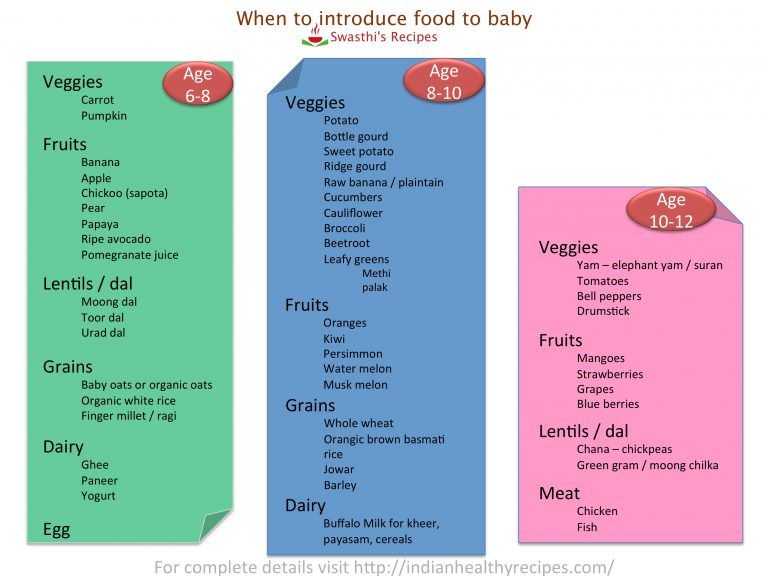 Puree is easy, tasty and safe to eat - it does not contain large pieces that will be superfluous for a baby who does not yet have enough teeth to chew solid food.
Puree is easy, tasty and safe to eat - it does not contain large pieces that will be superfluous for a baby who does not yet have enough teeth to chew solid food.
The kid wants to give all the best, so the excitement of parents is understandable: you need to choose the safest, most delicious and high-quality product. With ready-made mashed potatoes, parents can be calm about the diet of their boys and girls when it becomes possible to give the child meat. FrutoNyanya has developed meat purees that will help children grow up big, strong and healthy.
FrutoNyanya meat purees are:
- 100% natural, without artificial additives, preservatives, dyes, GMOs.
- Meat only, water and some rice flour for consistency, no starch or salt added.
- Selected raw materials only from domestic suppliers.
- Uncompromising quality control at all stages of production.
- A wide range, including purees with clinically proven low immunogenicity and hypoallergenicity** - "Rabbit" and "Turkey"
- Delicious puree with delicate texture
In the production of meat purees in glass jars, there is always a space above the product where a vacuum is created to ensure tightness.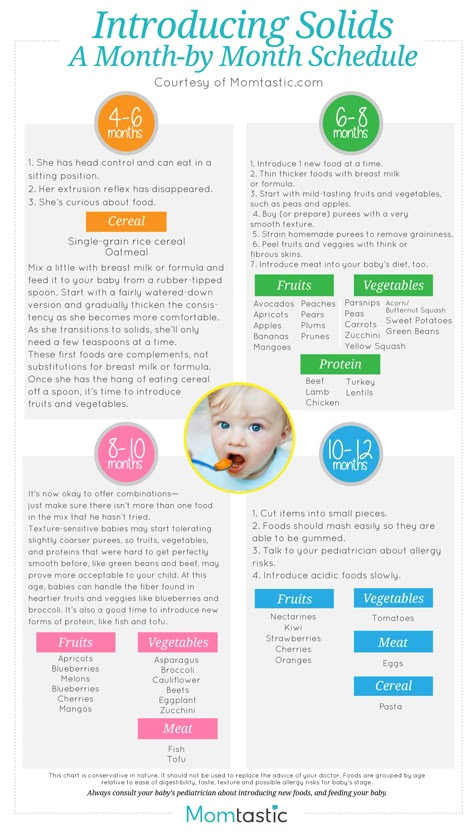 The oxygen present in this space interacts with the myoglobin protein found in the meat. Therefore, the top layer of puree darkens.
The oxygen present in this space interacts with the myoglobin protein found in the meat. Therefore, the top layer of puree darkens.
In the manufacture of canned meat in tin containers, packaging takes place without creating a vacuum, so there is no oxygen in the can, and the top layer does not change color.
Myoglobin is absolutely safe for health. It is not necessary to remove the darkened layer of puree, the puree can simply be mixed and heated.
Glass jars are convenient, environmentally friendly and do not emit any hazardous substances.
Tips on how to start meat complementary foods
When parents have decided how many months they can give their child meat, you should act according to the following algorithm:
- Consult a pediatrician.
- Prepare dishes. The child should receive complementary foods from separate dishes intended for young children.
- Select the feeding time. When introducing a new complementary food, offer it during the second morning feeding - this way you can observe the reaction of the baby to the new food during the day.
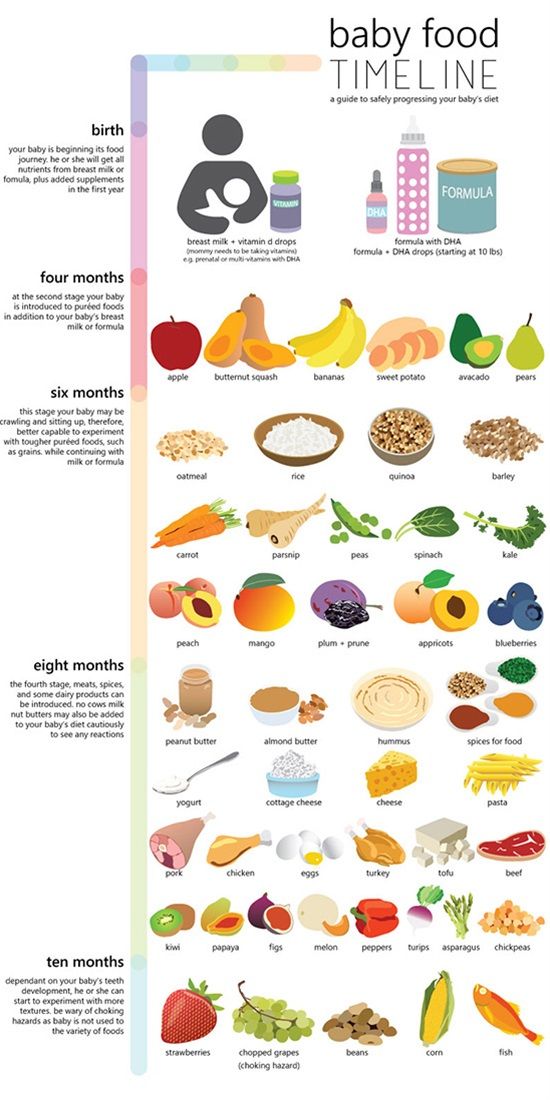
- Start with a small amount, such as 3-5 grams or half a teaspoon. During the week, it is necessary to gradually increase the portion until it corresponds to the age norm.
- Do not combine several new products at once. The kid will not benefit from such a variety.
FrutoNyanya is constantly evolving to better meet the needs of all its little customers. Therefore, when choosing which meat to introduce into complementary foods first, pay attention to the entire line of products.
The best food for a young child is breast milk. Specialist consultation is required. For information about age restrictions on the use of FrutoNyanya products, see the individual packaging.
*The first choice of products for the first acquaintance with the corresponding category of FrutoNyanya products.
**Hypoallergenicity was clinically proven at the SCCH in 2011, 2013, 2016, 18 FrutoNyanya complementary foods were tested: clarified apple juice, clarified pear juice, apple and pear juice with pulp, apple puree, pear puree , prune puree, broccoli puree, cauliflower puree, pumpkin puree, rabbit puree, turkey puree, dairy-free rice porridge, dairy-free buckwheat porridge, direct-pressed apple juice, direct-pressed apple and pear juice, juice from apples and straight-pressed plums, direct-pressed apple and blackcurrant juice, zucchini puree.

